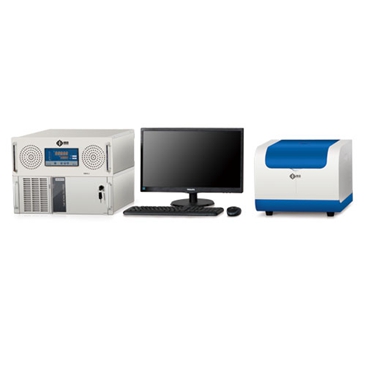Coal is an important basic energy and industrial raw material, and has made important contributions to ensuring the rapid and healthy development of China’s economy and society. Although the current new energy and renewable energy have been rapidly developed, coal is still the main energy source of China for a long time. В последние годы, with the advancement of eliminating backward production capacity, vigorously promoting green mining, intelligent mining, deep development and future mining of coal resources has become an important direction of development. What role does NMR play as an advanced scientific instrument in coal mining and coalbed methane control?
Study on the distribution of coal rock fissures and the mechanism of slurry flow in low field nuclear magnetic field
In the mining field, crack analysis and grouting reinforcement have always been the hotspots and difficulties in research. In order to promote the research on the fracture distribution of mineral engineering science and the meso-mechanism research of slurry flow, highlighting the characteristics and advantages of mining engineering research of China University of Mining and Technology, the School of Mining Engineering of China University of Mining and Technology introduced the limited stock of Suzhou Niumag Corporation Analytical Instruments in December 2018. The company (referred to as Newman) large-caliber MRI analyzer MacroMR12-150H-I, the process of coal rock grouting process analysis, slurry coagulation process and other aspects.
Establishment of evaluation method for pore fracture distribution of low field nuclear magnetic assisted coal
Another interviewee, Доктор. Sun Yong, studied under Professor Yu Cheng. В последние годы, the research group has focused on the research of coal seam cracking and anti-reflection methods. The main directions include pulsating hydraulic fracturing, liquid nitrogen cycle low temperature impact cracking, liquid carbon dioxide cracking. And accurate characterization of the pore structure of the coal. Доктор. Sun Yong introduced that in order to improve the gas drainage efficiency of low permeability coal seams, the research group proposed a pulsating hydraulic fracturing technology based on the hydraulic fracturing technology, which generates alternating at the tip of the coal body through the action of pulsating water pressure. The stress causes fatigue damage to the coal body, and a relatively rich network of fractures is formed at a lower pressure. Relative static pressure fracturing, the cracking pressure is reduced by more than 35%, and the number of cracks is increased by more than 20%.
The liquid nitrogen is periodically injected into the coal body: the liquid nitrogen can reach -196 ° C under normal pressure, and the large temperature difference between the high temperature coal body generates temperature stress; the pore fissure water freezes up to a pressure of 200 MPa and a volume expansion of 9%. The formation of ice wedges causes the crack tip to expand; the freezing and thawing caused by periodic injection can also cause fatigue damage to the coal body. This is another study conducted by Professor Yu Cheng’s research group – low temperature impact cracking of liquid nitrogen cycle. Доктор. Sun Yong introduced: “The liquid nitrogen cycle low temperature impact cracking and anti-reflection method is a new type of waterless cracking and anti-reflection method, which is suitable for the northwest region of China with abundant coal resources but extremely lack of water. The triple action of ice wedge action and freeze-thaw action can form a seepage network of interbedded pores in the coal seam, which significantly improves the efficiency of coalbed methane drainage.”
The third research direction of the research group is liquid carbon dioxide cracking, то есть, liquid carbon dioxide is used as fracturing fluid, and the coal body is subjected to water-ice phase frost heaving force, liquid carbon dioxide gasification expansion force and chemical acidification by cyclic injection. Under the action, fatigue damage occurs, and the pores of the original pores develop and derivate, forming a three-dimensional fracture network interwoven with each other to improve the gas permeability of the coal body. According to reports, the method can not only achieve effective storage of greenhouse gases, but also achieve the displacement effect of coal seam gas through high competitive adsorption of carbon dioxide.
Кроме того, the research team also carried out research on static breakers and traditional sealing materials. In the research direction of Professor Yu Cheng’s research group, the application of nuclear magnetic resonance technology in liquid nitrogen cyclic cracking and liquid carbon dioxide cracking is relatively mature, mainly used for the analysis of the evolution law of coal pore structure characteristics. A scientific method for testing and analyzing the pore structure of coal bodies was formed to evaluate the influence of different cracking methods on the pore permeability characteristics of coal.

 заплесневелый
заплесневелый